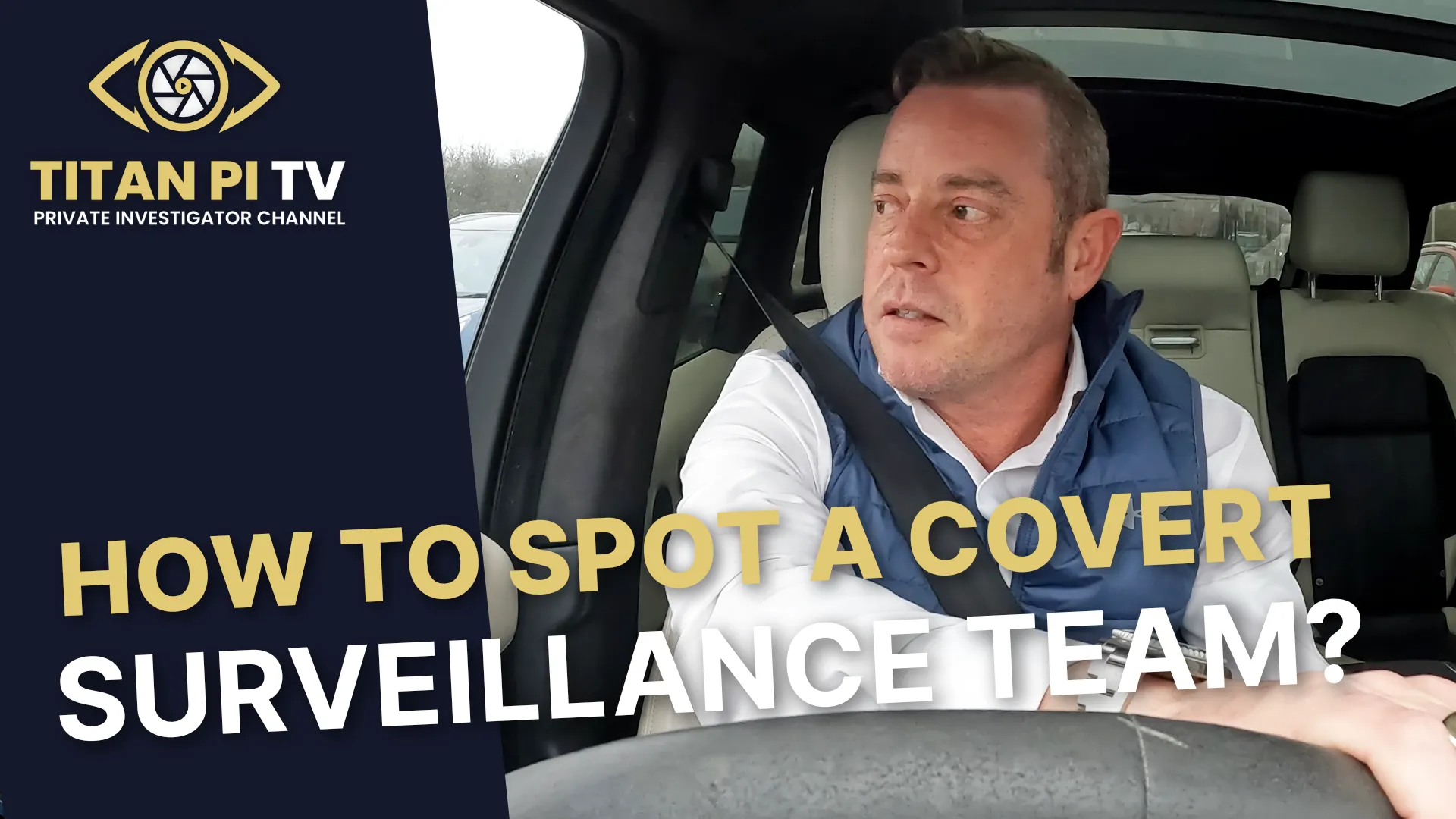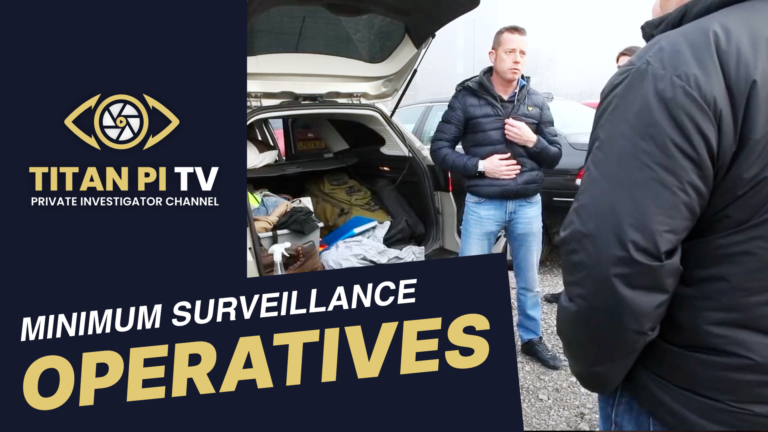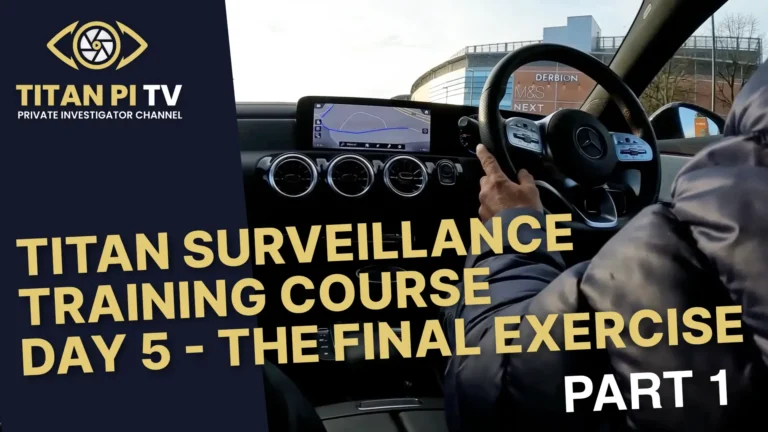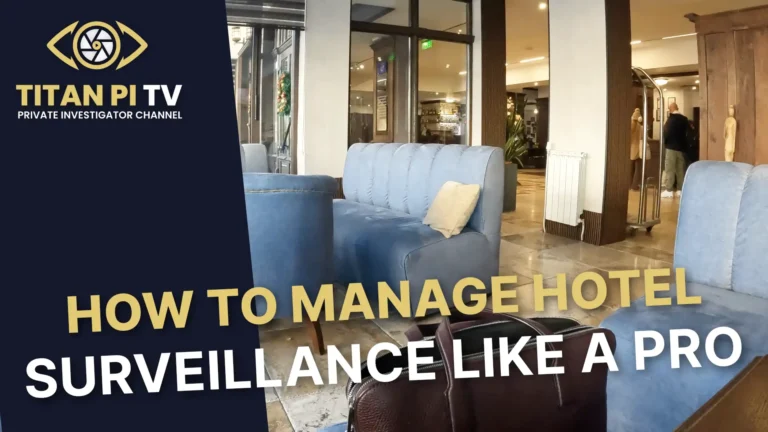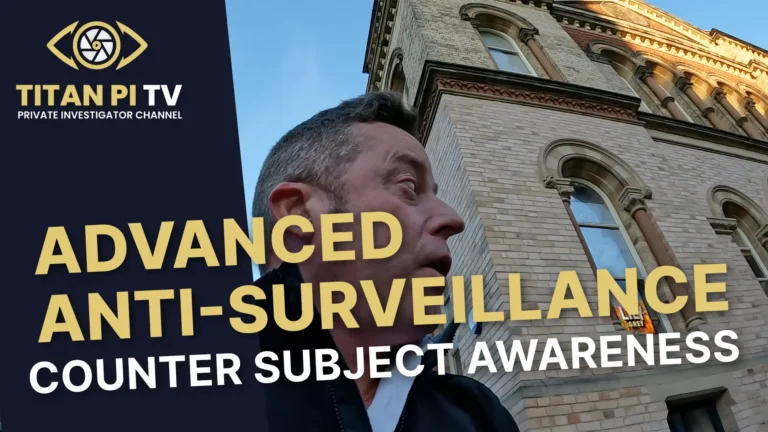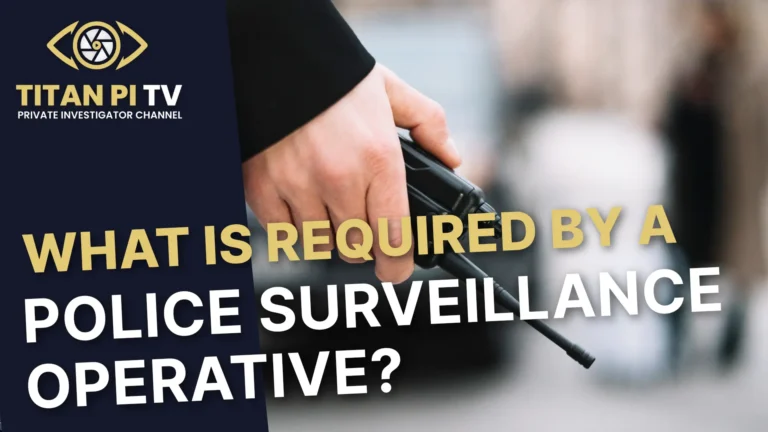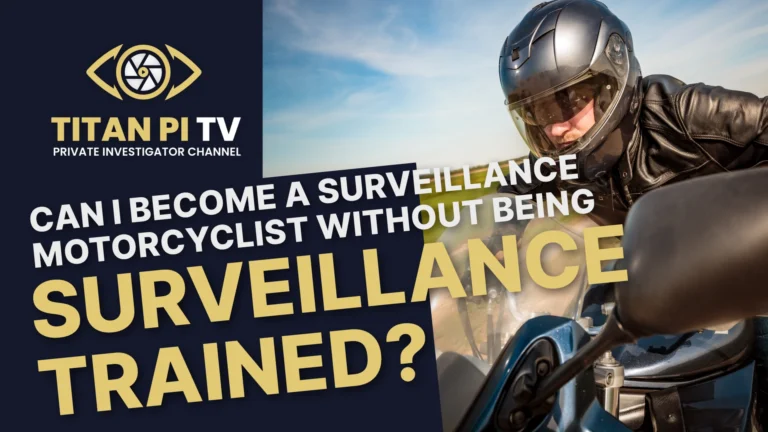How to Spot a Covert Surveillance Team?
Welcome to another episode of Titan PI TV, where we delve into the fascinating world of investigative operations. In this instalment, Simon Henson, Managing Director of Titan Private Investigation Limited, shares his expertise on how to detect a covert surveillance team. Whether you’re a curious observer or someone looking to sharpen your situational awareness, this guide offers valuable insights into the tell-tale signs of surveillance—and how to avoid detection if you’re on the other side of the operation.
The Challenge of Spotting a Surveillance Team
Spotting a well-trained surveillance team, particularly a police unit, is no easy feat. These operatives undergo rigorous training to blend seamlessly into their surroundings. However, over the years, Simon has noticed certain patterns and behaviours that can give them away. Here, he breaks down eight key indicators to help you identify a surveillance team.
1. Earpieces: A Dead Giveaway
One of the most obvious signs of a surveillance operative is the use of an earpiece. These devices are essential for communication within the team, but can be a glaring red flag if spotted.
Simon recalls an incident at a McDonald’s where he noticed several individuals with earpieces that didn’t match their skin tone—clearly not hearing aids. This observation led him to realise he had stumbled upon a police surveillance team.
Pro Tip for Operatives: To avoid detection, consider going “deaf”—removing your earpiece when in close proximity to the subject. This reduces the risk of compromise by third parties.
2. Hands in the Right Pocket
Another subtle but significant clue is the placement of the press-to-talk (PTT) device, which operatives use to communicate. Most operatives carry the PTT in their right pocket, often with their hand resting inside.
Simon noticed that all the individuals with earpieces at McDonald’s also had their hands in their right pockets—a double confirmation of their roles.
Pro Tip for Operatives: Switch the PTT to your left pocket, or simply press it through your clothing to avoid this tell-tale sign.
3. Shoes: The Unchanged Detail
Surveillance operatives often change their clothing, hats, or even wigs to avoid detection. However, one detail they frequently overlook is their footwear.
Simon highlights that operatives rarely change their shoes, making them a reliable identifier. For example, he notes that many police teams favour camel-coloured Timberland boots—a detail that would immediately raise his suspicions.
Pro Tip for Operatives: Rotate your footwear to avoid being identified by this consistent detail.
4. Vehicle Age and Maintenance
Police surveillance vehicles are typically no more than three years old and are maintained by external companies. This ensures they remain reliable and inconspicuous.
However, exceptions exist. Under the Proceeds of Crime Act (POCA), police may use confiscated vehicles, which could be older or more distinctive.
Pro Tip for Observers: Look for newer, well-maintained vehicles that seem out of place in the area.
5. Ghost Number Plates
Police surveillance teams often use “ghost plates”—registration numbers that are registered to the vehicle but don’t trace back to the police. These plates are changed regularly to avoid detection.
Simon advises looking for loose number plates or missing screw caps, as frequent changes can cause these details to become noticeable.
Pro Tip for Observers: Check for inconsistencies in number plates, such as loose fittings or unusual registrations.
6. Motorcyclists: A Rare Sight
Motorcyclists are a valuable asset in surveillance operations, but their presence can be a red flag. It’s unusual to see a motorcyclist parked in an urban area for extended periods, especially in poor weather.
Simon recalls instances where bikers were sheltered in cars by their team—a clear indicator of a surveillance operation.
Pro Tip for Observers: Be wary of motorcyclists who seem out of place or are accompanied by suspicious vehicles.
7. Double-Crewed Vehicles
While single-crewed vehicles are common in civilian settings, police surveillance teams often operate in pairs. Two individuals in a car, particularly two males, can be a strong indicator of a surveillance operation.
Pro Tip for Observers: Take note of vehicles with multiple occupants, especially if they appear to be monitoring their surroundings.
8. Unfamiliar Vehicles Near Your Home
Surveillance teams often position themselves at key points near a subject’s home. Simon suggests paying attention to unfamiliar vehicles parked at the first point of deviation from your residence.
For example, if you live on a cul-de-sac, look for cars parked at the T-junction where you would turn left or right. These vehicles may have warm engines or occupants sitting inside, waiting to follow you.
Pro Tip for Observers: Regularly monitor your neighbourhood for unfamiliar vehicles or individuals who seem out of place.
Final Thoughts
While spotting a surveillance team requires a keen eye and attention to detail, these eight indicators can help you identify potential operatives. For those in the industry, Simon’s tips offer valuable advice on how to avoid detection and maintain operational integrity.
At Titan, we pride ourselves on staying ahead of the curve, whether we’re conducting surveillance or helping clients understand the intricacies of investigative work.
What’s Next on Titan PI TV?
Join us next week as we explore another fascinating topic in the world of private investigation. If you enjoyed this episode, don’t forget to give us a thumbs up and subscribe to Titan PI TV for more exclusive content. You can also listen to our podcast, available wherever you get your podcasts.
Until next time, stay vigilant and keep safe!
Titan PI TV: Uncovering the Truth, One Investigation at a Time.

